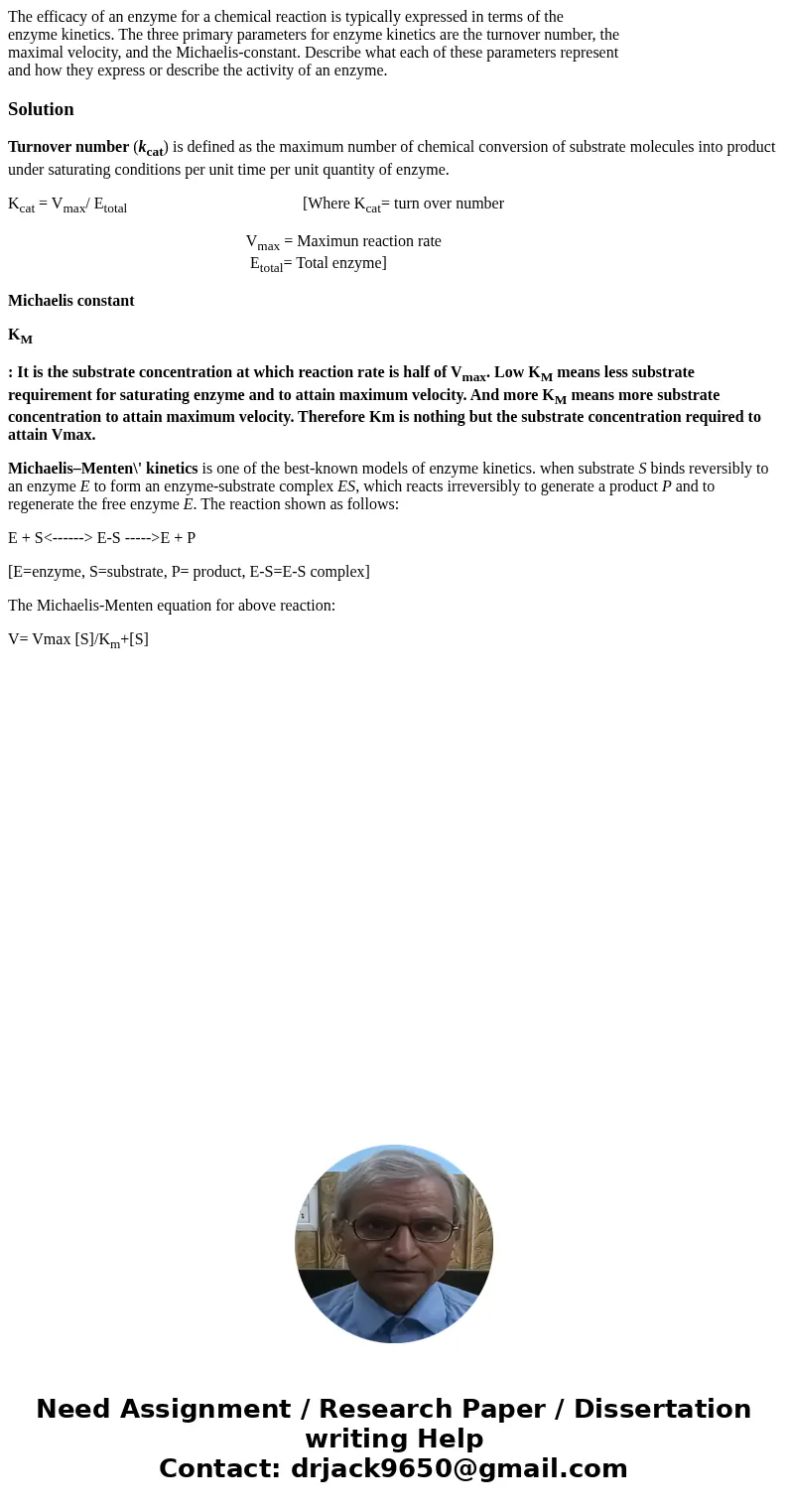The efficacy of an enzyme for a chemical reaction is typical
The efficacy of an enzyme for a chemical reaction is typically expressed in terms of the
enzyme kinetics. The three primary parameters for enzyme kinetics are the turnover number, the
maximal velocity, and the Michaelis-constant. Describe what each of these parameters represent
and how they express or describe the activity of an enzyme.
Solution
Turnover number (kcat) is defined as the maximum number of chemical conversion of substrate molecules into product under saturating conditions per unit time per unit quantity of enzyme.
Kcat = Vmax/ Etotal [Where Kcat= turn over number
Vmax = Maximun reaction rate Etotal= Total enzyme]
Michaelis constant
KM
: It is the substrate concentration at which reaction rate is half of Vmax. Low KM means less substrate requirement for saturating enzyme and to attain maximum velocity. And more KM means more substrate concentration to attain maximum velocity. Therefore Km is nothing but the substrate concentration required to attain Vmax.
Michaelis–Menten\' kinetics is one of the best-known models of enzyme kinetics. when substrate S binds reversibly to an enzyme E to form an enzyme-substrate complex ES, which reacts irreversibly to generate a product P and to regenerate the free enzyme E. The reaction shown as follows:
E + S<------> E-S ----->E + P
[E=enzyme, S=substrate, P= product, E-S=E-S complex]
The Michaelis-Menten equation for above reaction:
V= Vmax [S]/Km+[S]

 Homework Sourse
Homework Sourse